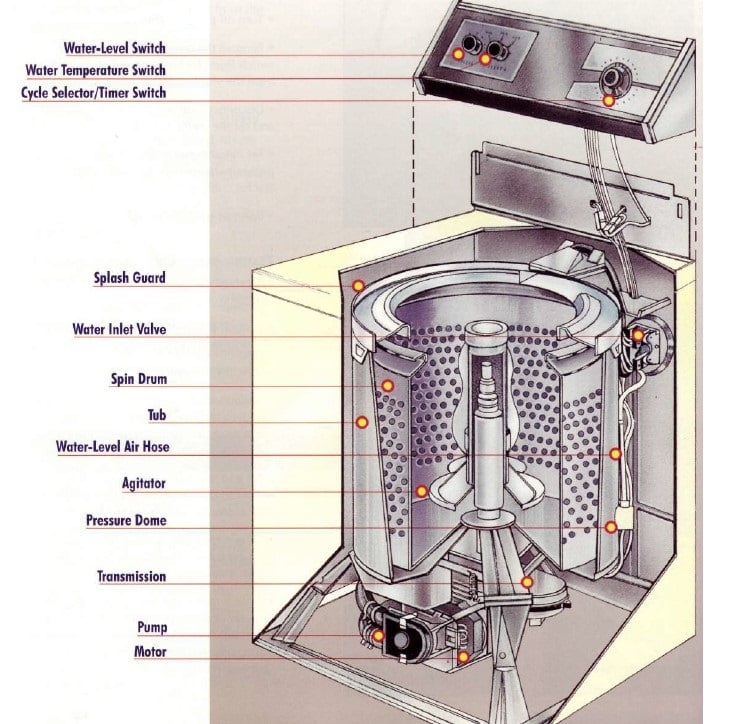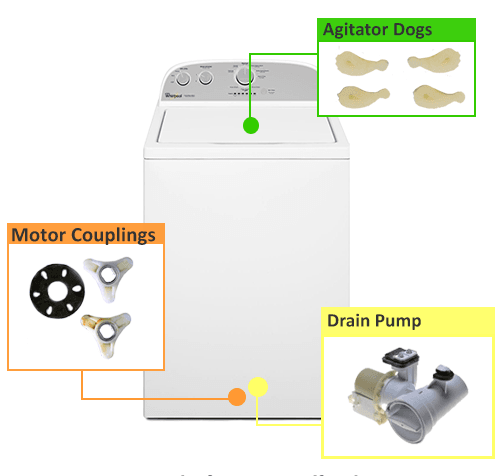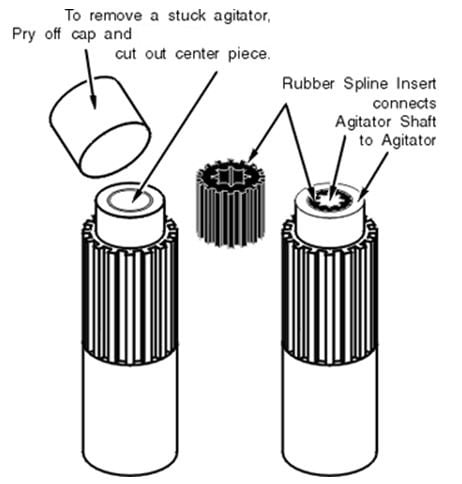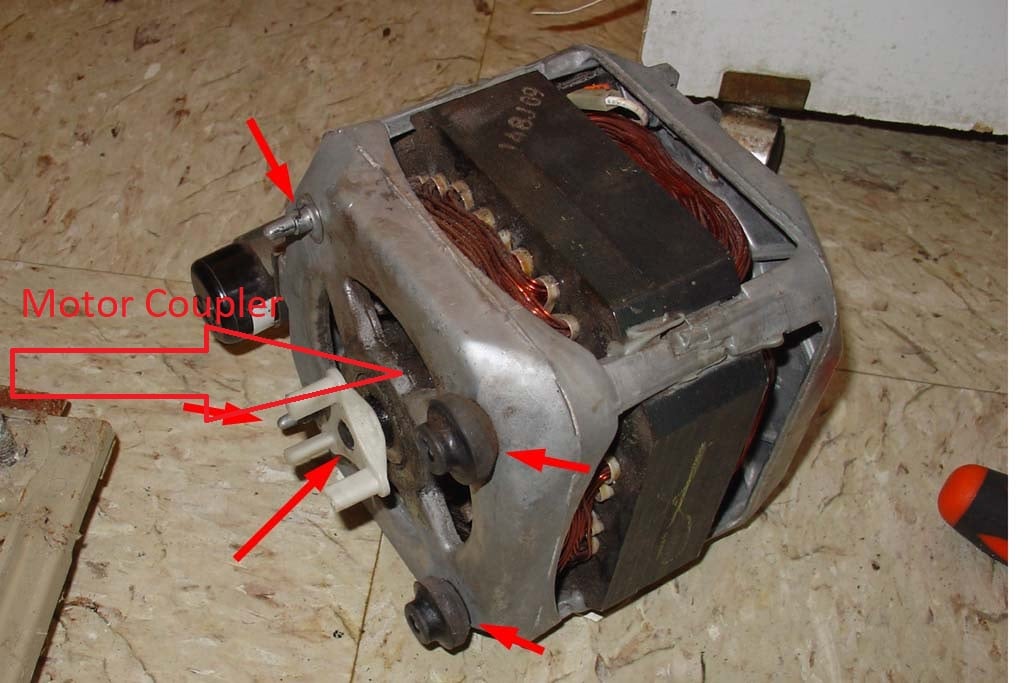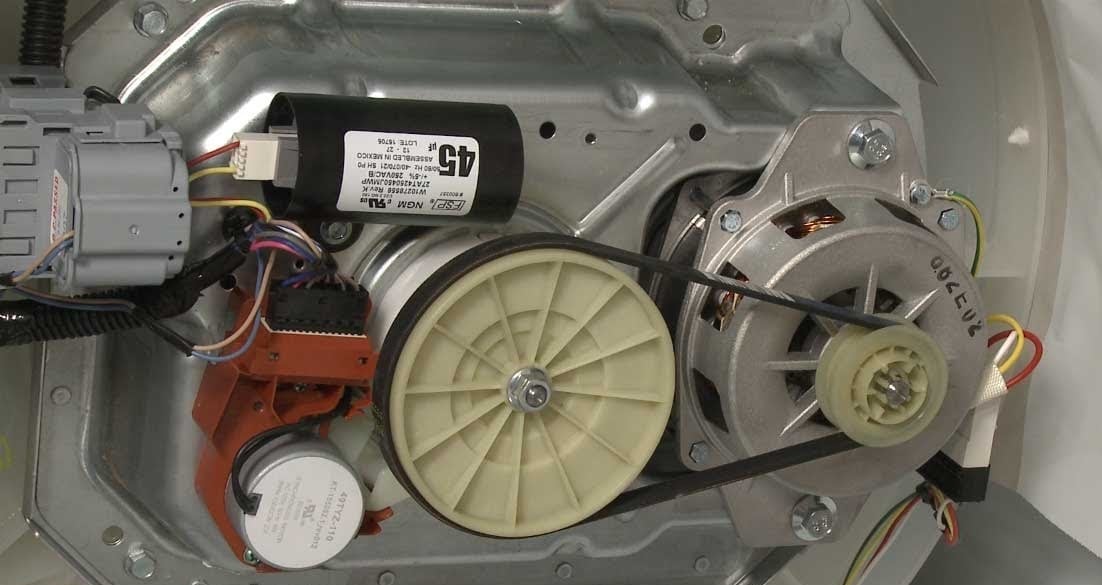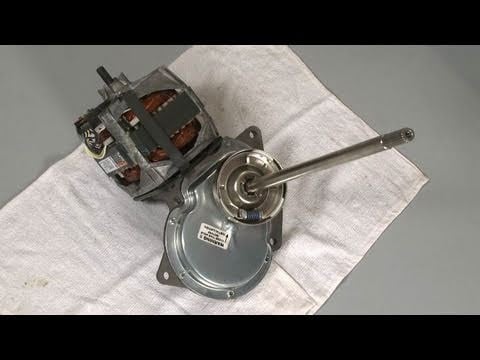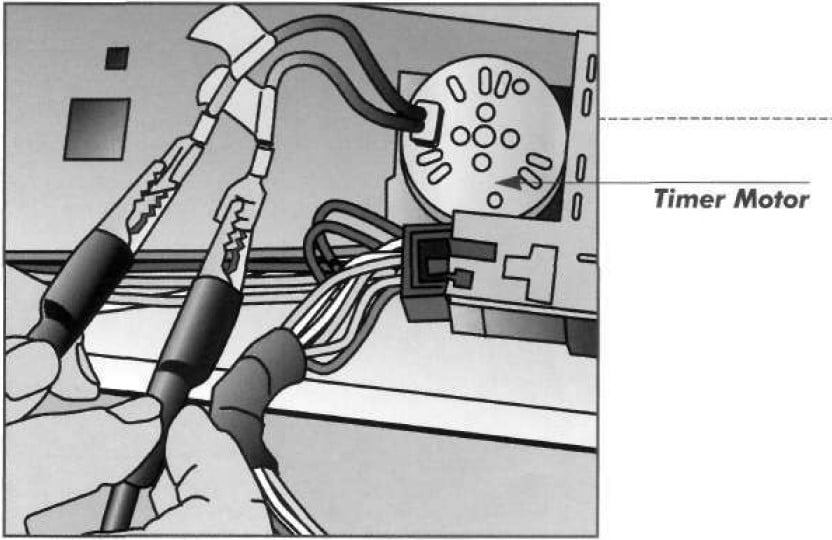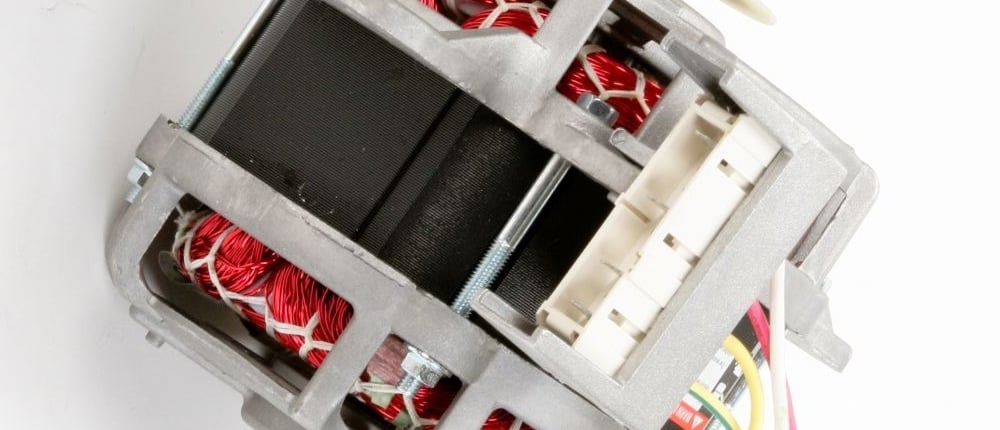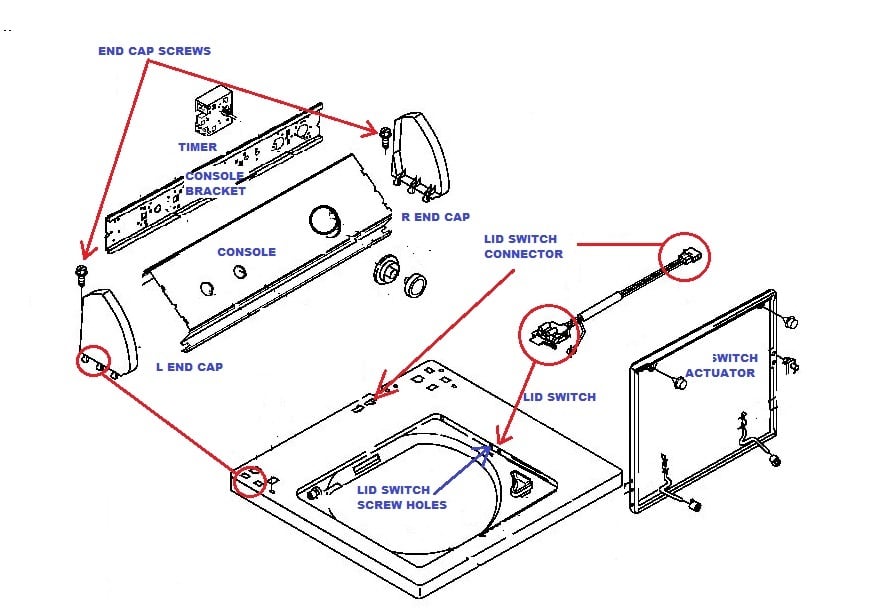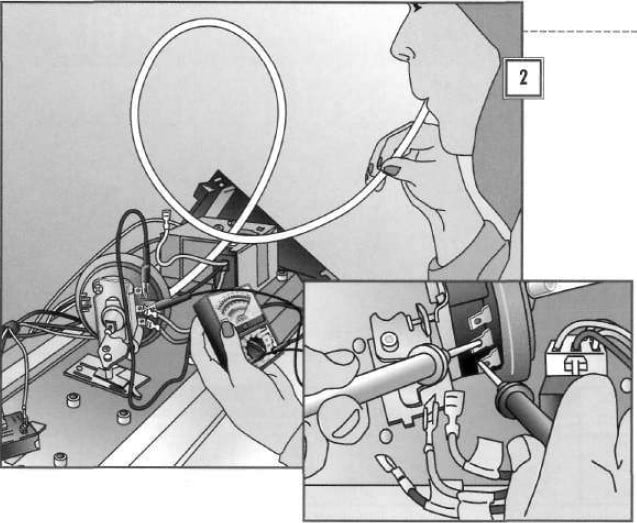Troubleshooting washing machine agitator
The washing machine problem is always (actually it refers to any other household appliance) showing up not at the right time. What can you do if the issue you face is “washer won’t agitate”. We would like to share some efficient tips which are well-liked by most professionals. Get prepared for troubleshooting well – ensure you have all required tools at your hand:
Required Tools
- Hex Head and Torx Wrenches
- Nut Drivers
- Socket Set and Adjustable Wrench
- Screwdrivers
- Hammer
- Pliers
- Spanner Wrench
- Multi-meter
What is the washing machine agitator?
The washing machine agitator makes the clothes move inside the tub. It is the spindle that is located in the middle of the washer drum, and is driven by the transmission’s output shaft. The agitator has fans and wings which are turning within the entire cycle. There are two types of washer agitators: the single piece agitator and the dual agitator.
Agitators and impellers – what is the best?
Both the agitator and the impeller are installed in top loading washing machines, but the quality of the washing is a bit different. What makes it different?
- Agitators
- The central post of agitators twists back and forth, rubbing against clothes to remove stains.
- Clothes are soaked with the water recirculated from the cycle.
- Common functionality.
- Spins for a compelling clean.
- Impellers
- Impellers are equipped with low-profile cones, discs and wheels that rotate to rub clothes against each other.
- Clothes are soaked with the water recirculated from the cycle.
- More space in the basket for capacious articles, easiness at loading and unloading.
- Spins for a compelling clean.
How to fix washer agitator
Agitator Directional Cogs
The agitator cogs are also known as ratchet cogs, agitator cogs and dog ears. Their mission is to operate the direction of the upper part of the agitator while the agitator is participating in the dual action.
Usually the top section is moving in a single direction, while the bottom section is rotating in multiple directions. If the agitator is malfunctioning, the problem can be initiated by the worn agitator cogs. As a rule, they get worn due to the performance life and the regular overloading the washer.
If your washer isn’t agitating because of the defective cogs, your clothes will remain on the top of the tub. Besides, if you can spin the top section of the agitator by hand in both directions, the cogs need to be replaced. Discard the dispenser cover to get access to the bolt top section of the agitator. Unscrew the bolt and get the cogs and its bearing support replaced.
Agitator Coupler & Cap & Bolt
Some top loading washers are inserted with the agitator coupler that is located between the transmission shaft and the agitator. If your washer is making grinding sounds while the agitator is turning freely, these facts point to the defective drive coupling. Discard the agitator and get the bolt out that secures the coupling to the transmission shaft.
Afterwards, carefully discard the coupling. Make sure the splines on the transmission shaft are clean and not rusty. The new coupling should be replaced together with the new bolt and gasket as they are designed as one assembly.
Direct Drive Motor Coupling
If the direct drive motor coupling is faulty, your washer won’t be agitating. The drive forks which are inserted into the motor coupling can slip, and therefore, won’t be able to perform the transmission and clutch. Discard the pump and the motor. Test the motor coupling for its continuity using the multimeter. Replace it, if there is no continuity.
Drive Belt
The drive belts are also can be responsible for the issue if your washer is not agitating. They are typically located on the bottom of the washer. Check whether the belts are not worn, having removed the front panel or the cabinet. Make sure the transmission drive pulleys are clean and free of any obstructions. Inspect the motor whether it is not greased. The idler assembly and the belt tensioner have to be also checked for their proper operating features. If done, replace the belt.
Transmission
The transmission consists of the input shaft and the output shaft. If the agitator drive shaft is not oscillating, make sure that the input shaft is turning. If it is turning, but the agitator shaft isn’t, the reason of the problem is the transmission. In such cases it is recommended replacing the complete transmission.
Timer Issue
The timer supplies the power to the motor and makes it rotate in the right direction. If the motor fails to get the power, the timer is supposed to be the cause. Inspect the timer connections for their continuity using the multimeter. To determine the correct timer terminals, consult the wiring diagram of your appliance. Discard the timer, if the timer doesn’t have the continuity.
Check Drive Motor
Most washing machines are equipped with the reversing motors. It means that while agitating the motor is turning in one direction, and while spinning and draining it is rotating in the opposite one. If the motor isn’t turning in the agitation direction, ensure that the power is transmitted to the correct motor terminals. Use the wiring diagram of your washer to make sure you are dealing with the correct terminals. Replace the motor, if it is not rotating in any direction.
Lid Switch problem
If the washing machine agitator is not working, check the lid switch. Its function is to operate the motor. It is typically located under the main top. After having unplugged your washer, test the lid switch for its voltage. It needs to be replaced, if there is no voltage.
Selector Switch
If your washing machine doesn’t agitate, the selector switch can be a reason. The function of the selector switch is to regulate the drive motor speed. To detect whether the switch is defective, you should check it for its continuity using the multimeter. Before testing, make sure you are dealing with the correct terminals, having used the wiring diagram of your appliance.
Water Level Switch
The water level switch can be at fault, if the washer is not agitating. The switch determines the correct water level and supplies power to the drive motor circuit. Consult the wiring diagram to determine the correct switch terminals and check them for continuity. If there is no continuity, replace the water level switch.
Feeling lost in these recommendations? The repair service company Care&Repair is ready to help you in any appliance issues. We perform repair services in the city of Toronto and the Greater Toronto Area. You can contact our hotline any convenient time and schedule the immediate repair visit. We work to make your life better!
-
1
 Call Us
Call Us -
2
 Get a Quote On-Site
Get a Quote On-Site -
3
 Get Your Appliance Fixed
Get Your Appliance Fixed -
4
 Visa | Cash | MasterCard
Visa | Cash | MasterCard -
5
 Enjoy Your Day
Enjoy Your Day


